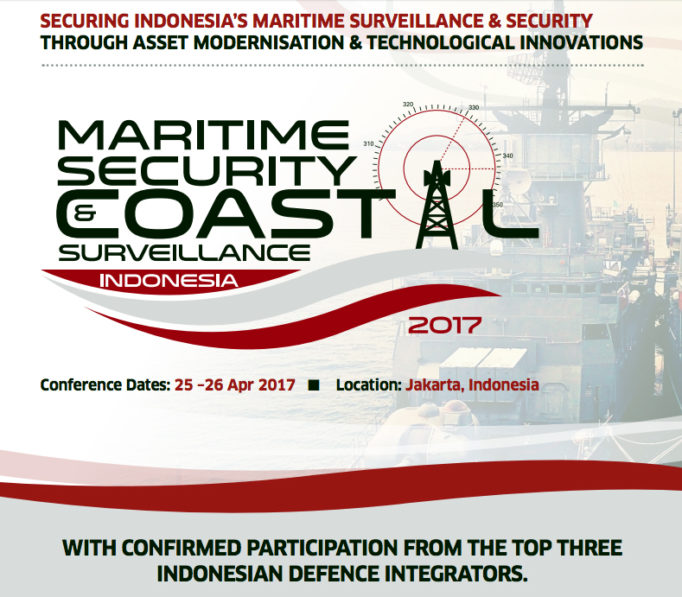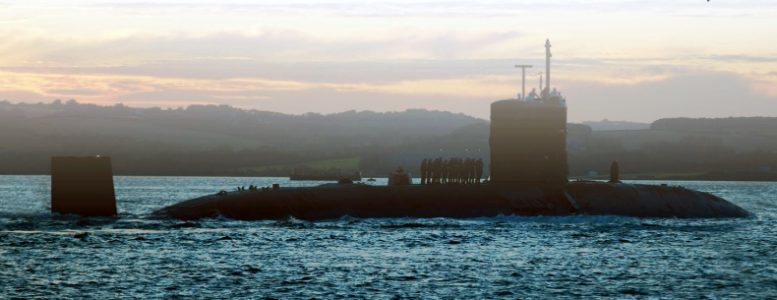The Indonesian Navy (Tentara Nasional Indonesia – Angkatan Laut: TNI-AL) is currently anticipating the delivery of three new Type 209/1400-class submarines from the South Korean shipbuilder Daewoo Shipbuilding and Marine Engineering (DSME).
The service has also indicated aspirations to operate a fleet of either 10 or 12 underwater fighting platforms beyond 2024.
What are the Indonesian government’s requirements for these future boats, and who are the contenders in the race to supply between five and seven more submarines, and its related subsystems, to the TNI-AL? What are the TNI-AL’s plans for vessels that are currently in service? This report aims to provide the readers with a brief understanding of the government of Indonesia’s submarine programs; its requirements for industrial participation, and future plans.
Operating a fleet of 12 Union of Soviet Socialist Republics (USSR) built Whiskey class submarines on top of heavy surface combatants, the TNI-AL was largely considered to be the pre-eminent naval power in Southeast Asia, and much of the Asia-Pacific region, in the 1960s and 1970s.
Navies in the region then were operating fleets of small surface combatants and smaller patrol boats. None came close to the Indonesians in terms of maritime influence and naval firepower.
But a lack of a strategic need for underwater fighting platforms in the region, combined with budgetary concerns and a lack of availability for spare components, saw the boats being retired from service, the last of which (KRI Pasopati), was retired in 1990.
The TNI-AL however maintained a small class of two German-built Cakra-class submarines, which were received in 1978, as a token fleet to the present day, and the years between 1980 and 2000 saw Indonesia as the only submarine operator in Southeast Asia. These Cakra-class boats are still in service today, albeit the need for upgrades.
However, the turn of the century gave rise to a number of strategic challenges for Indonesia that forced the country to relook its policy of operating a token fleet.
One of these challenges is the decision taken by the Republic of Singapore Navy (RSN) to acquire ex-Swedish Navy Sjoormen-class submarines beginning in the mid-1990s. This was the small city- state’s first ever underwater fighting platform, and they have been acquired to ready the service for the more advanced new-built German submarines that will be delivered from 2020.
Another immediate neighbor, the Royal Malaysian Navy (RMN), also acquired two new-built submarines from France.
In addition, China began taking on a more robust posture in the South China Sea within the unilaterally declared nine-dashed line maritime demarcation that lies close to Indonesia’s Natuna Islands region.
Indonesia was seen to have no other strategic choice but to bolster its underwater fighting platforms, and anti-submarine warfare (ASW) capabilities.
Minimum Essential Force
The decision to operate a fleet of between 10 and 12 submarines was first articulated in the country’s Minimum Essential Force strategy, which was issued in late 2007, that aimed to modernize the country’s military.
In pursuit of this strategy, the Indonesian government awarded a USD1.1 billion contract to South Korean shipbuilder DSME to build three Type 209/1400-class, referred to locally as the Chang Bogo-class, diesel-electric submarines that can undertake a variety of missions including anti-submarine warfare (ASW), anti-surface warfare (ASuW), mine laying, and special forces insertion operations.
The first and second vessels are build in South Korea, while the third boat will be assembled in Surabaya at Indonesian state-owned shipbuilder PT PAL’s premises, to fulfill a mandatory technology transfer stipulation by the Indonesian government. TNI-AL is expected to receive all three vessels in the class by late 2018.
The country is also reportedly in talks with Russia for a further acquisition of between two and three improved Kilo-class (Type 636) boats, although a contract for this is yet to be finalized at the time of writing.
Earlier in 2016, the Indonesian House of Representatives commission on defense, intelligence, and foreign affairs approved a sum of $1.6 billion for the procurement of these vessels.
However, Indonesia is reportedly reexamining the constituents of its planned fleet of between 10 and 12 submarines. More specifically, the Indonesian government has questioned the wisdom of operating an entire fleet of ocean-going submarines, when the country is largely archipelagic, and surrounded by relatively shallow waters.
As part of this re-examination, the Indonesian government appointed PT PAL to team up with French shipbuilder DCNS under a government-to-government mandate, in a working group that aims to study future submarine requirements of the TNI-AL. The working group, which began in March 2016, will determine the feasibility of operating an underwater platform that can deploy in deep and littoral waters.
Besides working with PT PAL on this study, DCNS is also reportedly offering the company’s Scorpene 1000 platform, which features an endurance of about 40 days, to meet this requirement, although a formal contract for this has yet to be issued by the Indonesian government.
The South Koreans are also reportedly interested to offer a follow-on class of improved Chang Bogo-class variants, which are currently in service with the Republic of Korea Navy (RoKN), to meet this requirement. The class can be built by either DSME or Hyundai Heavy Industries.
Whichever vendor Indonesia settles for, it will likely have to meet strict transfer-of-technology arrangements mandated by the Indonesian government, for major defense procurements.
These may include an arrangement to build the submarines in-country, which will likely be at PT PAL’s facilities in Surabaya. The shipbuilder is currently in the process of completing a submarine-building pen to assemble the final Chang Bogo-class boat from DSME, and will likely utilise the infrastructure for future builds.
While the TNI-AL looks set to induct its new submarines soon, there are no signs that the operator will decommission the two Cakra-class boats that are currently in service with the TNI-AL’s Eastern Fleet.
The Indonesian government is currently studying options to extend the operational life of the boats, including a possible upgrade of the vessels’ propulsion and combat management systems, up to 2024.
DCNS has formally offered a submarine combat management system (CMS) developed by its wholly-owned subsidiary, Underwater Defense Systems (UDS), as part of its positioning for a possible MRO of the boats. The suite is known as the Submarine Tactical Integrated Combat System (SUBTICS).
The CMS has been designed to be integrated with a Thales sonar suite, and Whitehead Alenia Sistemi Subacquei’s (WASS) torpedoes and fire control system, and as such, there is a possibility that the TNI-AL is looking to upgrade these systems as well.
The upgrades will, however, depend on budgetary approval from the Indonesian government. But given recent strategic concerns, it is likely that these approvals will be secured soon.

